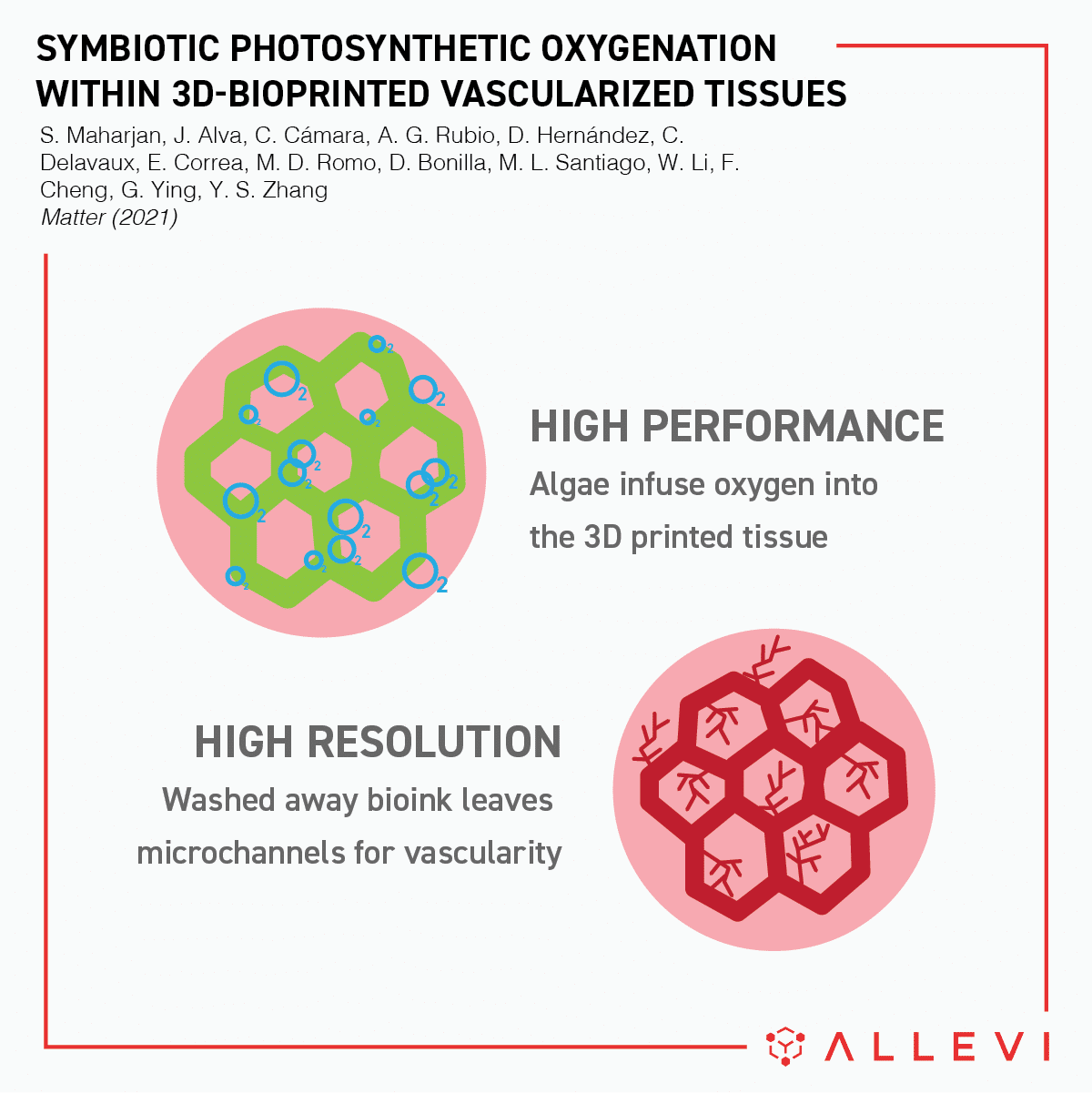
Allevi Blog
Bioprinting Algae to Improve Tissue Oxygenation
- Updated on February 26, 2021
Engineers often rely on Mother Nature to help solve difficult problems. After millions of years of evolution, living organisms such as plants, animals, and microbes have discovered how to survive in even the harshest of environments. Often times, organisms from different species are able to provide each other with the nutrients, resources, or protection that both need to prosper. We call these relationships symbiotic. There are examples of symbiosis we know well; the honeybee gathering nectar from flowers; the barnacle on the belly of a whale; the bacteria in your digestive tract. But what about the algae in your 3D printed organ?

The next great symbiotic relationship for humans could be between fabricated tissues and pond scum. Allevi Authors at Harvard Medical School and Brigham and Women’s Hospital recently published their findings on the use of algae in tissue engineering.
Despite the many advances that we as a scientific community have accomplished in the pursuit of engineering organs, ensuring that 3D printed tissues have proper blood flow has been a common roadblock. Branching blood vessels, called capillaries, bring oxygen and nutrients to cells to promote growth, function, and basic survival. Without these networks of tiny vasculature, organs can’t function properly. Researchers have tried solving this issue from many different angles; 3D printing tiny vasculature networks into the tissue, using synthetic oxygen-releasing bioinks, or developing lattice structures to promote growth.
These Allevi Authors set out to develop a natural method for sustained oxygen release into an engineered tissue and found a solution in nature. Their novel bioprinting method uses an Allevi 2 bioprinter and a bioink that incorporates photosynthetic single-celled green algae called Chlamydomonas reinhardtii. The algae bioink feeds off the carbon dioxide released by the surrounding cells and in return releases oxygen into the tissue. This boost of oxygenation enhanced the viability of the liver tissue and yielded a high (and healthy) level of cell density. Finally, the Allevi Authors washed away the algae-bioink support structure which in turn left behind microchannels that were perfused with vascular cells to create a vascular network. In the end, this amazing algae-laden bioink actually helped the tissue’s performance twice; first by boosting oxygen levels in the tissue and then by creating the vascular network to help the tissue grow and thrive. In addition to its high performance, algae is natural, eco-friendly, and cost-effective.
With more iterations, this novel 3D bioprinting method could lead to a major breakthrough in the way we engineer organs and ultimately bring us that much closer to eliminating the organ donor waitlist.

